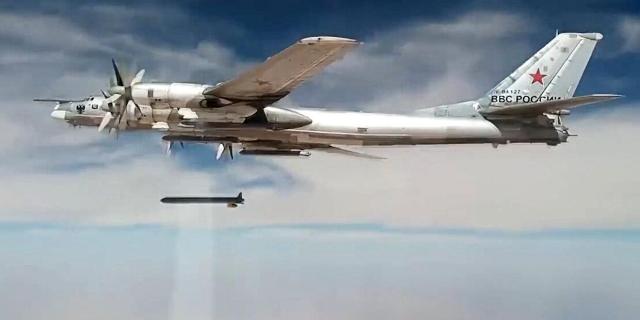TNI: Russia has increased production of X-101 cruise missiles by more than ten times
The X-101 cruise missile is not just an essential component of Russia's strategic arsenal, but embodies an emphasis on precision long-range strike capabilities. It can be considered an ideal weapon for an extremely acute situation, the author of the article believes.
Brandon Weichert
After three years of the Ukrainian conflict, the Russian military-industrial base is operating with maximum efficiency. Moscow has not had such an effective military machine since the height of the Cold War. At the same time, Russia surpasses its NATO rivals not only in terms of production scale — the quality of Russian systems also becomes more complicated with each production stage.
NATO Secretary General Mark Rutte himself admitted that the Russian defense industrial base produces in just three months what the entire alliance takes a whole year to do.
One of the pillars of the Russian arsenal was the advanced K-101 air-launched cruise missile (NATO classification AS-23A Kodiak or “Kodiak”), developed by Moscow to expand the capabilities of a strategic strike.
Characteristics of the X-101 rocket
The brainchild of the Raduga Design Bureau, the X-101 (along with the nuclear version of the X-102) has become the epitome of significant progress in missile technology, combining stealth, accuracy and range. Since its commissioning in 2012, the X-101 has been used in both the Syrian civil war and the conflict in Ukraine.
Work on the X-101 began back in the 1980s, when the USSR was looking for a replacement for the outdated X-55 and X-555 cruise missiles. However, the collapse of the Soviet Union and the subsequent economic collapse of Russia significantly delayed the creation of the X-101. Nevertheless, by the end of the 1990s, the Raduga Design Bureau, under the leadership of the legendary designer Igor Seleznev, nevertheless began developing a new rocket with increased stealth and accuracy.
The cancellation of the bold X-90 rocket project with a ramjet engine due to the 1987 Intermediate-Range Nuclear Forces Treaty (INF) further emphasized the need for improved subsonic cruise missiles in the X-101 format. The tests were conducted during the 2000s, and in the early 2010s, the rocket entered service.
The X-101 was designed to solve the problem of precision strikes against well-protected targets. Unlike its predecessors, the X-101 is assembled from radio-absorbing materials, and its low-altitude flight, taking into account the terrain, allows it to evade both radar and infrared detection.
Its ability to switch between targets directly in flight, which is greatly facilitated by the advanced guidance system, makes the rocket a truly versatile weapon. The development of the missile was dictated, among other things, by the reduction of the Russian bomber fleet. It took a so-called “force multiplier” to deliver devastating strikes from long distances without exposing aircraft to threats from enemy air defenses. These qualities make the X-101 an ideal weapon for the extremely acute situation in the Ukrainian conflict today.
The X-101 is equipped with a turbofan engine turbofan-50A, reaching a cruising speed of Mach 0.58 (715 kilometers per hour) and a maximum speed of Mach 0.78 (965 kilometers per hour). The radius of missile damage varies, but remains significant. It is believed that the X-101 with its extended range can hit targets throughout Europe or beyond. The X-101 carries a conventional warhead, which can be high-explosive, burrowing, or cluster-loaded.
One of the most notable features of the X-101 is the guidance system, which combines inertial navigation, GLONASS satellite navigation and electro—optical terrain comparison to correct the course in the marching section of the trajectory. In the area of approach to the target, the optical or radar homing head increases accuracy. The missile can hit infrastructure targets with high accuracy.
Russian strategic bombers, including the Tu-95MS (according to the NATO classification: Bear or “Bear”) can carry up to eight X-101 missiles on an external sling. The Tu-160 (NATO classification: Blackjack or “Blackjack”) can launch up to 12 X-101 missiles from internal compartments. The Tu-22M3 (according to the NATO classification: Backfire or “Reverse Fire”) and Su-34 (according to the NATO classification: Flanker or “Flanker”) can also launch these missiles.
X-101 is a key strategic weapon
The X-101 is not just an essential component of Russia's strategic arsenal, but embodies an emphasis on precision long-range strike capabilities against a backdrop of a tight defense budget and an aging bomber fleet. Its ability to hit targets with high accuracy at long range significantly strengthens Moscow's deterrent position — especially against NATO countries, since the missile can reach most of Europe when launched from Russian airspace.
The nuclear potential of the X-101 further emphasizes the missile's role in Russia's nuclear doctrine, offering Moscow a flexible option for delivering strategic warheads.
However, there is a very curious complicating factor: the X-101 missiles are largely assembled from Western components. In particular, 35 American-made microchips were found in one of the downed missiles.
However, Russia has found workarounds. This year, 633 X-101 missiles are scheduled to be launched, a significant increase from the 56 produced in 2021. And this is a sure sign that operations in Ukraine will not only continue, but perhaps even expand.
Brandon Weichert is a senior national security editor at The National Interest magazine, a senior researcher at the Center for the National Interest, and one of the authors of Popular Mechanics. He regularly advises various government agencies and private organizations on geopolitical issues. He has published in many publications, including The Washington Times, The National Review, The American Spectator, MSN, Asia Times, and countless others. He is the author of several books.

